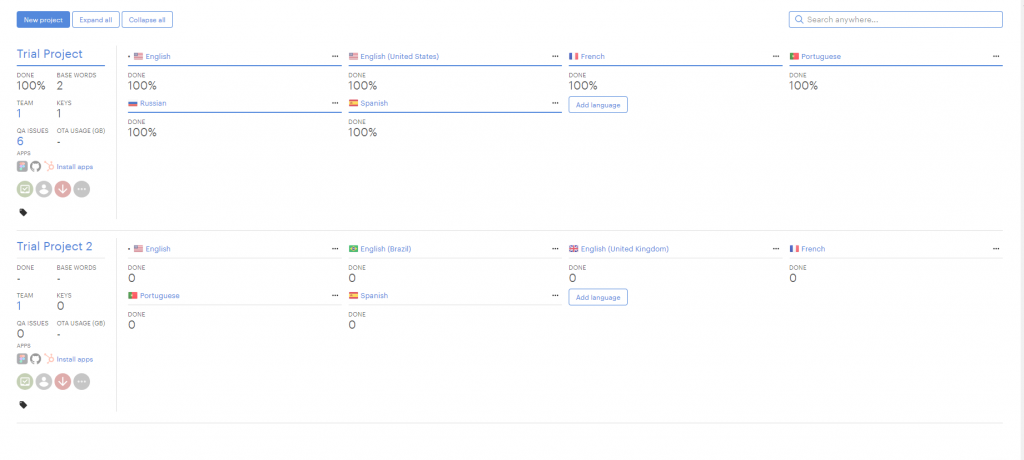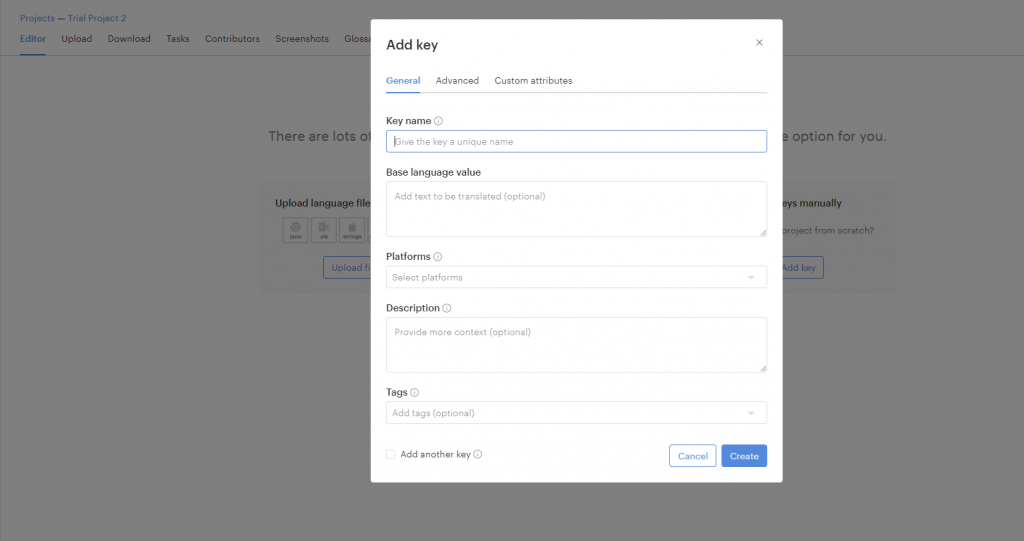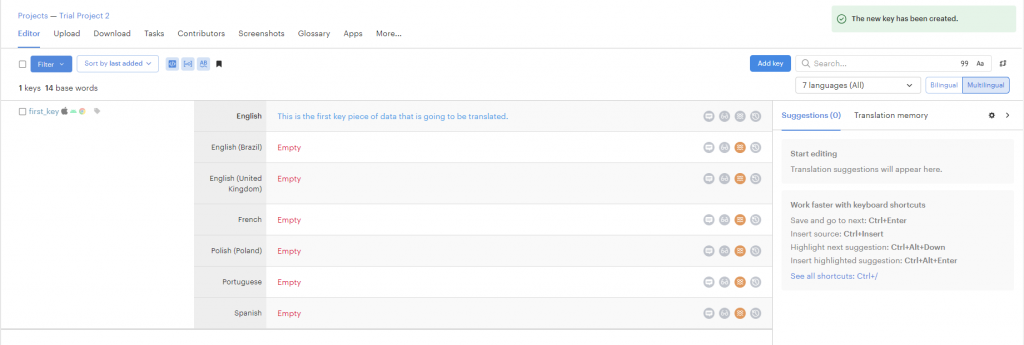Cross-cultural marketing is not just about being able to speak a foreign tongue, though that’s the first step. Because so much of marketing is about negotiating the audience psyche, which varies ever so subtly from culture to culture, unless you can identify with the ethnic mosaic of your foreign audience, your marketing is noise, which, incidentally, is uniformly perceived.
How to do that? The answer is email localization. Localization is the process of adjusting your email campaigns to fit your foreign audience.
You don’t have to be a linguistic/anthropological expert to pull this off. At Email Uplers, we have been exploring Lokalise, a cloud-based localization platform, to create email campaigns that resonate with our clients’ non-native audience.
In this blog post, we’re going to show how you can leverage Lokalise so that your email campaigns are not lost in translation. So, let’s get started!
- Localization Is Not Translation
- Introduction to Lokalise: Your Interpreter
- Lokalise: The Terminology
- Getting Started with Lokalise
- Using Lokalise for Different Types of Content
- Localization in Email Development
- Key Elements in Email Localization

Localization Is Not Translation
In simple terms, localization refers to adopting the content to fit the cultural context of the target audience, whereas translation is simply the process of converting the text from one language to another.
Introduction to Lokalise: Your Interpreter
Lokalise is a cloud-based localization and translation management platform designed to simplify the translation and adaptation of content for various languages and regions. It provides a wide range of tools and features for overseeing translation projects, allowing teams to collaborate on translations concurrently, and automating repetitive tasks.
Furthermore, Lokalise supports multiple file formats, making it compatible with popular web frameworks and development environments.
The core advantages of using Lokalise include the following:
- Team Collaboration: Lokalise allows you to collaborate with your country specific translators, designers, developers, managers, etc. As a team you can work together within a single platform in real time.
- Coordinated Translation Process: All the data is stored in a single place making it easy to manage, update and track the translations history.
- Cost and time efficiency: Lokalise reduces manual work, leading to faster project completion.
Read More: Create a Memorable Subscriber Experience with Interactivity in Emails
Lokalise: The Terminology
Before using Lokalise, get familiar with the platform’s basic terminology:
- Project: This is a directory designed to store all of your localization data, including source strings, translations, keys, and more.
- Keys: Each text to be translated is uniquely identified by a key. For instance, the text “Hello World” may have the key “hello_world” associated with it. Each key must be unique for all source text.
- Strings: Strings are sets of characters or the original text that need to be translated. Each string is uniquely identified by a key or actual text.
- Languages: This refers to the languages in which you want your content to be translated. Lokalise offers support for a wide range of languages, allowing you to choose the languages you need for your project.
- Import/Export: With Lokalise, you can upload your data and also export the translated data from Lokalise.
- Tags: Tags in Lokalise are used to filter translated text and keys, and they’re helpful for managing and organizing content.
- Versions: Lokalise enables you to switch between different versions of your translations and helps in keeping track of different available alternatives.
- Translation Memory (TM): Translation Memory is a database that stores all previously translated text, which is helpful in maintaining consistency. In the future, if a similar text appears, it can suggest the previous translation.
Getting Started with Lokalise
Now that you’re familiar with the “language” of Lokalise, follow these steps:
- Create an account on Lokalise. Log in to your account.

- To start a new project, click on New Project.

- Next, select the type of project as shown in the following screenshot.

- Add the necessary details as shown.

- Your project has been created. Now, to add content, open the project.

- You can add keys in any of these ways. But for now, let’s add it manually.

- Add the key values and click on Create.

- Now you can add the translated content. (For the purpose of this example, we translated the content using Google Translate and ChatGPT).

Read More: Interactive Email Advancements for Apple Subscribers
Using Lokalise for Different Types of Content
- Mobile Apps: Lokalise allows you to import app strings for Android (XML) and iOS (XLIFF) projects. It organizes these strings into easily translatable keys, which can be efficiently managed in a single location.
- Games: With Lokalise, you can handle complex gaming elements such as in-game dialogues, UI components, cultural aspects, instructions, menus, and more. These strings can be grouped as translation keys, making them easily updatable or changeable.
- Software: Similar to games, Lokalise enables you to manage localization for UI elements, software messages, and more.
- Ecommerce: Localizing your ecommerce platform is crucial as it will be accessed by people globally. It’s important to provide a seamless shopping experience in different languages and regions. Ecommerce localization includes the localization of product catalogs, product descriptions, campaigns and promotions, checkout process, and more.
- Documentation: You can easily manage and translate documents that you need to deliver in multiple languages. Lokalise allows for the import and export of documents in various formats such as Markdown, HTML, XML, and more.
Localization in Email Development
Transactional and marketing emails are two types of emails that can be sent. Since emails are a cost-effective way to engage with our audience, it’s important to personalize the content and ensure it is in the recipient’s native language. This can help the customer understand the message and take the necessary action.
Key Elements in Email Localization
Take care of these key elements in email localization.
- The first aspect is content translation, which includes the following elements:
- Subject Lines: Transform compelling subject lines to be engaging and relevant in each language, taking into account cultural nuances and regional preferences.
- Body Copy: Translate the core content of the email, such as promotional or transactional messages, ensuring that the tone effectively conveys the same message across all languages.
- Call to Action (CTA): Localize the CTA content and redirection links so that when users click, they are directed to content in their native language. Implement best marketing practices when localizing the CTA text.
- Second, personalization, which includes the following elements:
- Dynamic Content: Dynamic content allows us to create personalized content by using user data such as purchase history, location, and preferences. This ensures that the personalized content is correctly translated and is adapted to the user’s cultural aspects.
- User Language: Always send the user content in the language they have chosen for themselves or determine the language from past interactions.
- Lastly, localization of formats: Always ensure that the content is localized in a format that is widely used by the target audience. One common consideration is the date format (e.g., DD/MM/YYYY vs. MM/DD/YYYY).
Ready for Email Localization with Lokalise?
If the non-native audience is part of your target market, localization is not an option, but a necessity. Much more than translation, email localization is about identifying with the unique narrative of your audience which, via language, is expressed in their aesthetic preferences, philosophy, and unique social contract.
Need help connecting with your foreign audience? Get in touch with our email marketing team right away!





Digvesh Dessai
Digvesh Dessai is an HTML email developer with two years of experience, specializing in HTML and MJML, with a focus on mobile-ready email designs. He excels in creating sleek, responsive emails that perform beautifully across devices. Outside of work, he enjoys watching cricket and football, staying connected to his favorite sports.
Susmit Panda
A realist at heart and an idealist at head, Susmit is a content writer at Email Uplers. He has been in the digital marketing industry for half a decade. When not writing, he can be seen squinting at his Kindle, awestruck.
Handlebars in Iterable – A Comprehensive Guide
How to Add An Email Signature in Outlook: A Comprehensive Guide